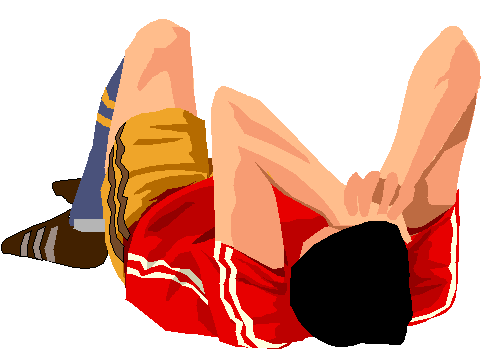|
Sports and Exercise Safety Guide!

. The best way to ensure a long and injury-free athletic career is to play it safe from the start. So, start playing it safe right now and bookmark this page for future reference, add us to your desktop by clicking here and don't forget to tell your friends about us in order to avoid the following:
Sports injury prevention keeps everyone on the court or playing field. Read on to learn the basics of sports and exercise safety like getting the essential equipment, warming up, staying off the court when you're hurt and learning the rules of the game. Did you know that playing tennis with a badly strung (too loose or too tight) racquet while wearing worn-out shoes can be just as dangerous as playing football with an out-of-place shoulder pad? Using the wrong - or improperly fitted - equipment is a major reason why teens are injured. The equipment you wear while participating in sports and other activities is an important factor in keeping yourself injury-free. Whether you are playing league baseball or street hockey, you need to wear safety gear such as kneepads, goggles, wrist pads, shin guards, mouth guards, helmets, elbow pads, ankle supports, waist supports, shoulder pads and proper footwear. You can get these items and more at store. Don't rush into any sport or exercise without warming up first, muscles that haven't been properly prepared tend to be injured more easily. Start out with some light cardiovascular activities, such as easy jogging, jumping jacks, or brisk walking, just to get your muscles warmed. Follow your brief warm-up with some stretches. Stretching is important after warm-ups because your tissues will be more elastic [flexible] due to the increase in heat and blood flow to the muscles. If you're injured and you try to come back too soon, the already weakened area is at increased risk for re-injury. Your doctor, coach, or team trainer will give you specific advice on when you should return to your sport or activity. Don't let anyone - including yourself, your parents, your friends, or even your coach – pressure you into playing before your body is fully healed. Seek Medical Treatment whenever you experience: 1- Moderate to severe pain that interferes with daily activity.
Rules and regulations usually exist for a good reason - to keep your and your teammates in the game and away from injuries. Do yourself a favor and learn the rules thoroughly - and then follow them. Rules aren't restrictions - they are designed to promote safety so that everyone can enjoy the game. Sometimes rules may not be directly related to a sport or activity but need to be followed anyway. For instance, in-line skating, skateboarding, or bike riding teens should pay strict attention to all traffic laws. Other sports use proper techniques, instead of rules, to promote safety. For example, when two tennis players rush the net, a nicely angled volley is the correct shot - not a hard smash socked directly at an opponent's face. Proper coaching, and the techniques that go with it, usually prevent unsafe play. Another example of a safe technique occurs in weight lifting. Weight lifters should take a breath between each repetition. On any pushing phase of a lift, you want to exhale. So if you're doing a bench press, let the bar come down to your chest, and if you're pushing up, breathe out. Because if you hold your breath, it really raises your blood pressure, and pressing a lot of weight can lead to a blackout or fainting spell.
|
 Liz practices golf every day after school as well as on weekends. She feels persistent pain in her elbow, but she doesn't want to be off the golf team, so she doesn't say anything to her coach. A little while later, she is diagnosed with tendinitis.
Liz practices golf every day after school as well as on weekends. She feels persistent pain in her elbow, but she doesn't want to be off the golf team, so she doesn't say anything to her coach. A little while later, she is diagnosed with tendinitis.

